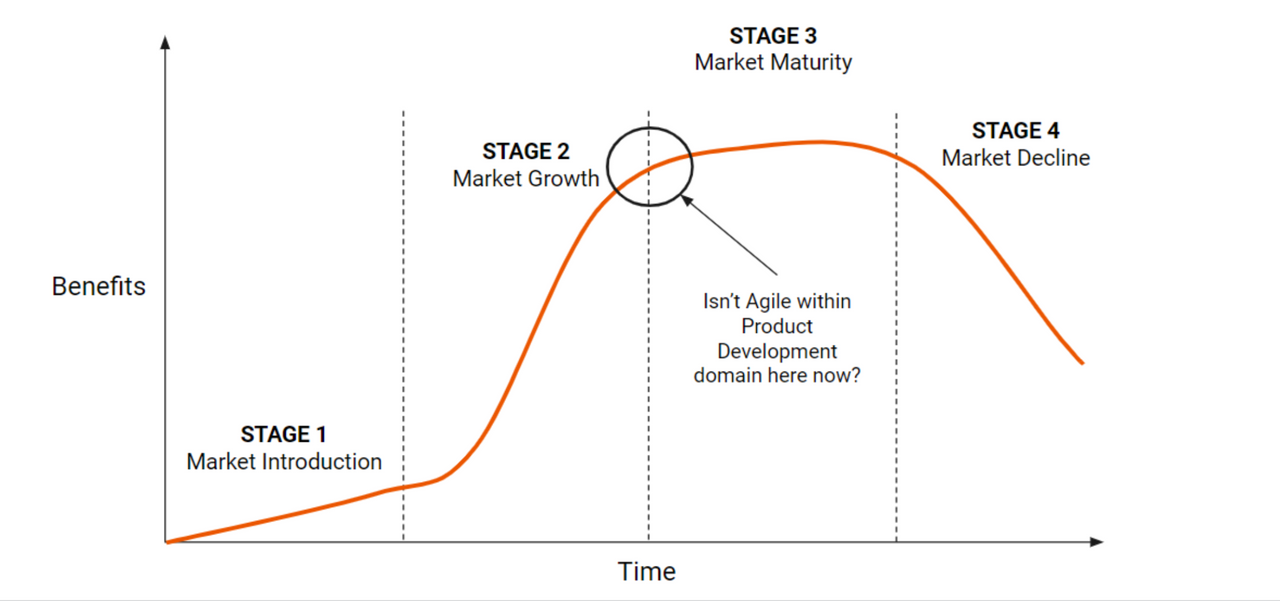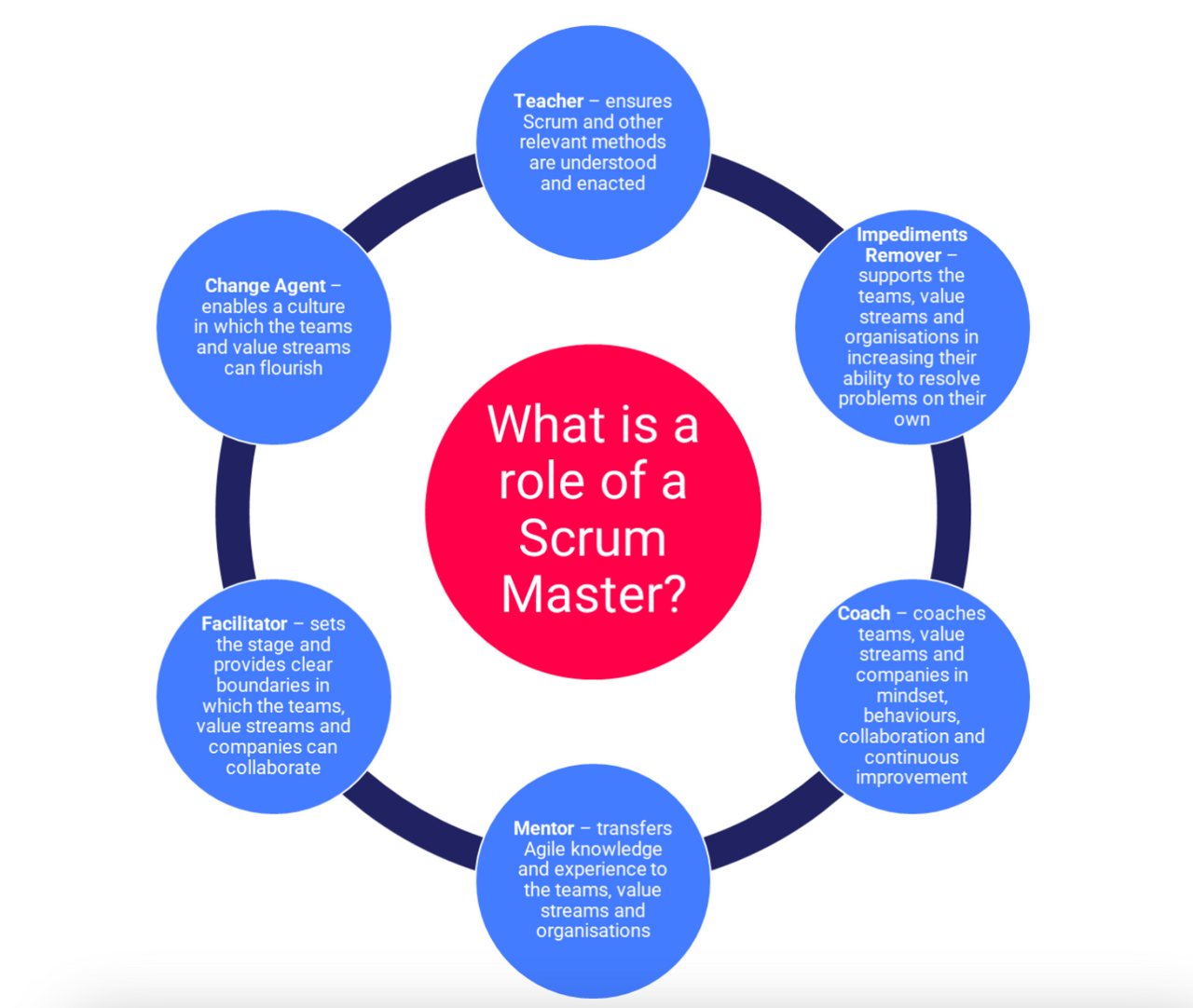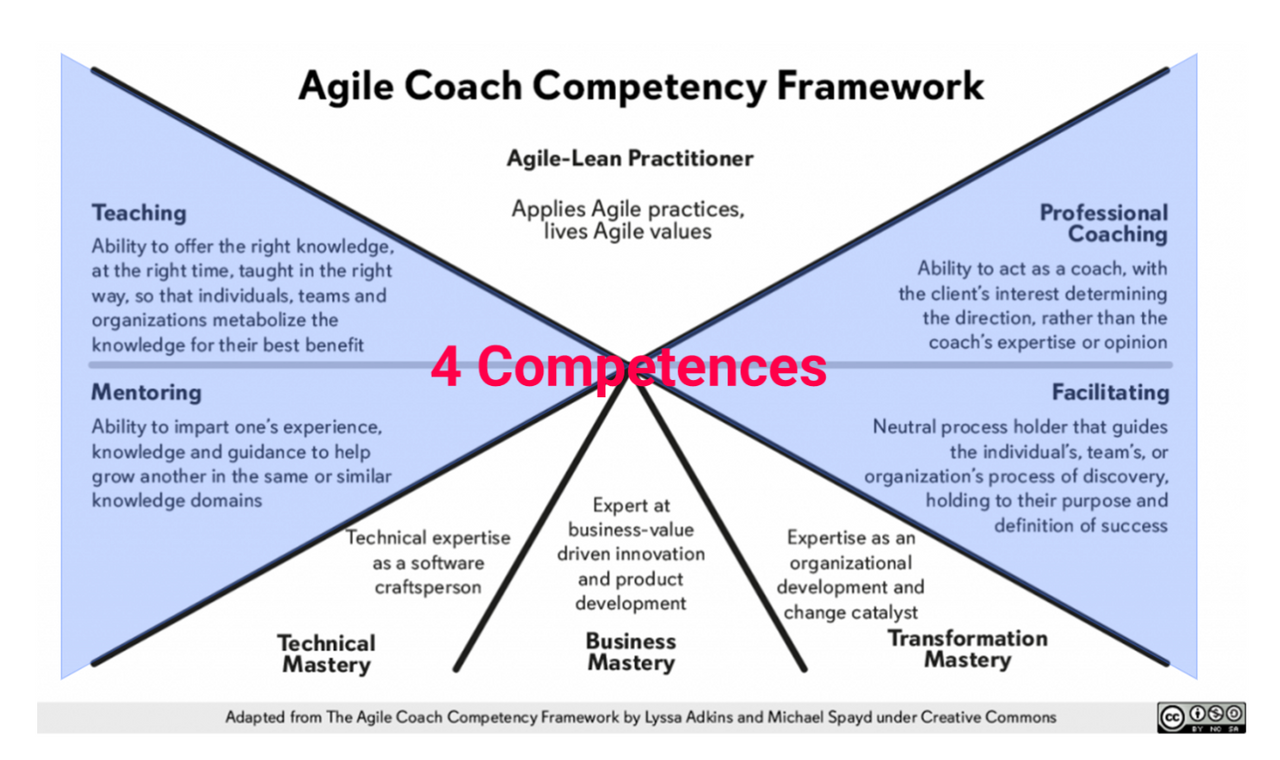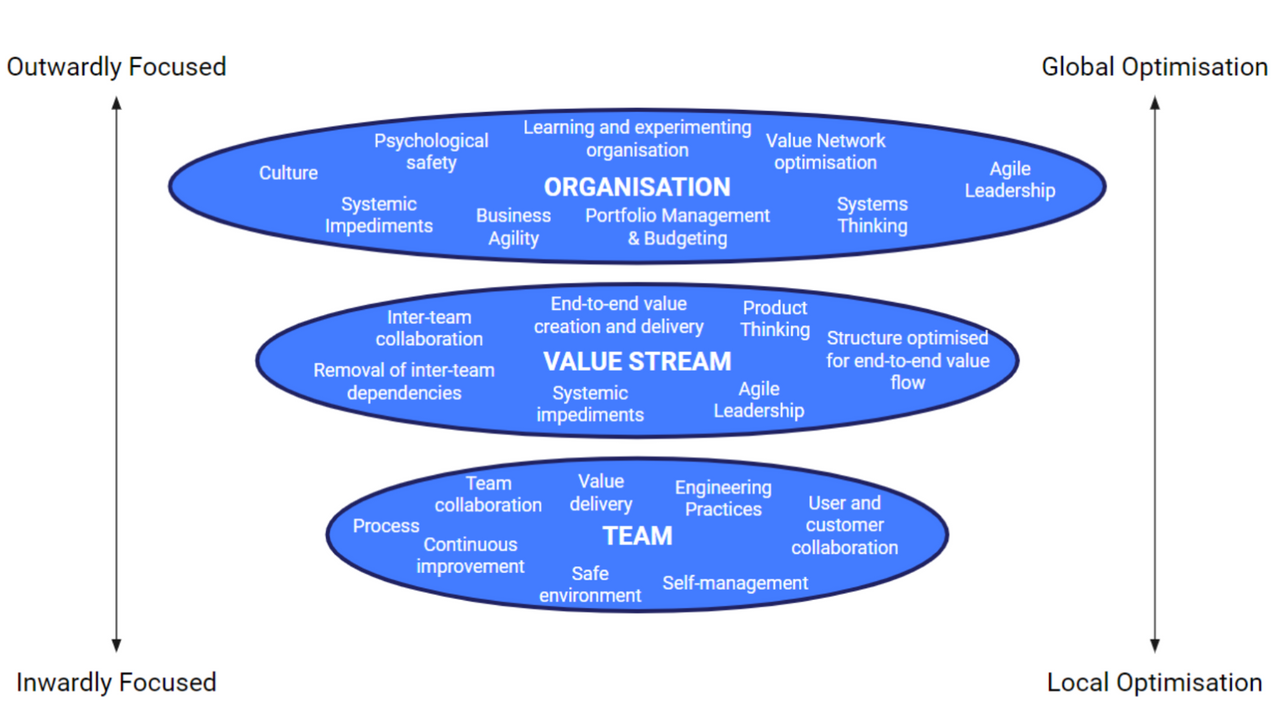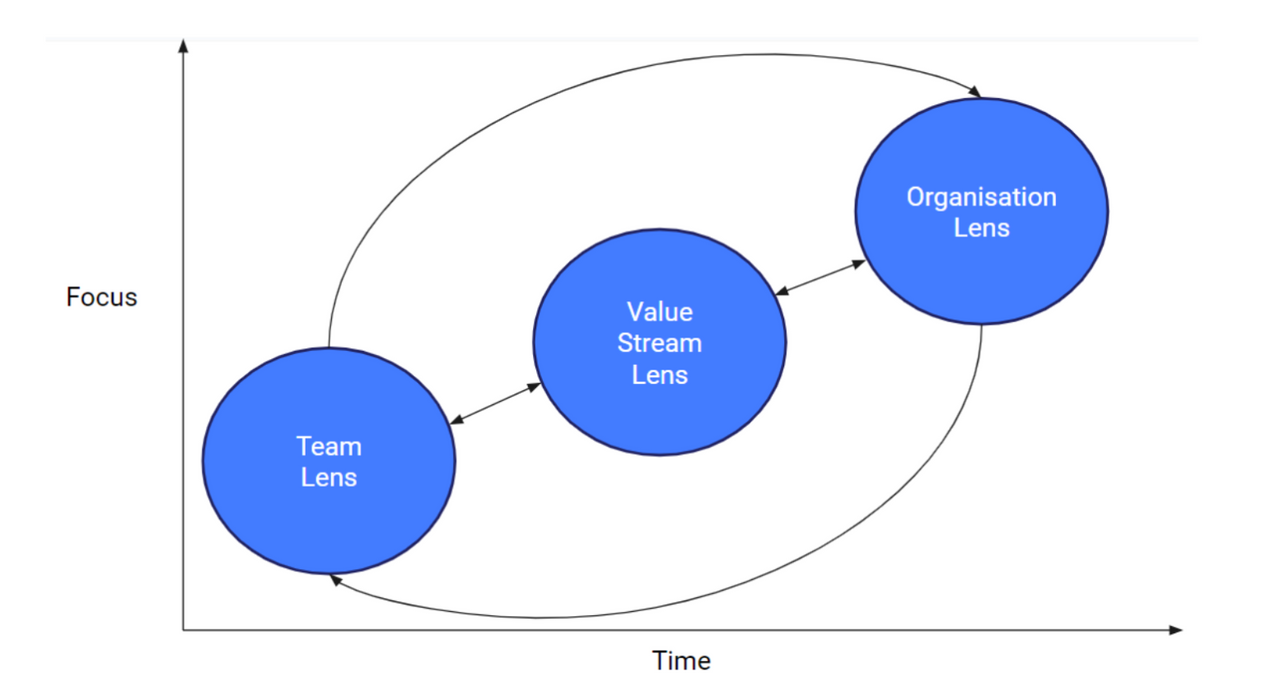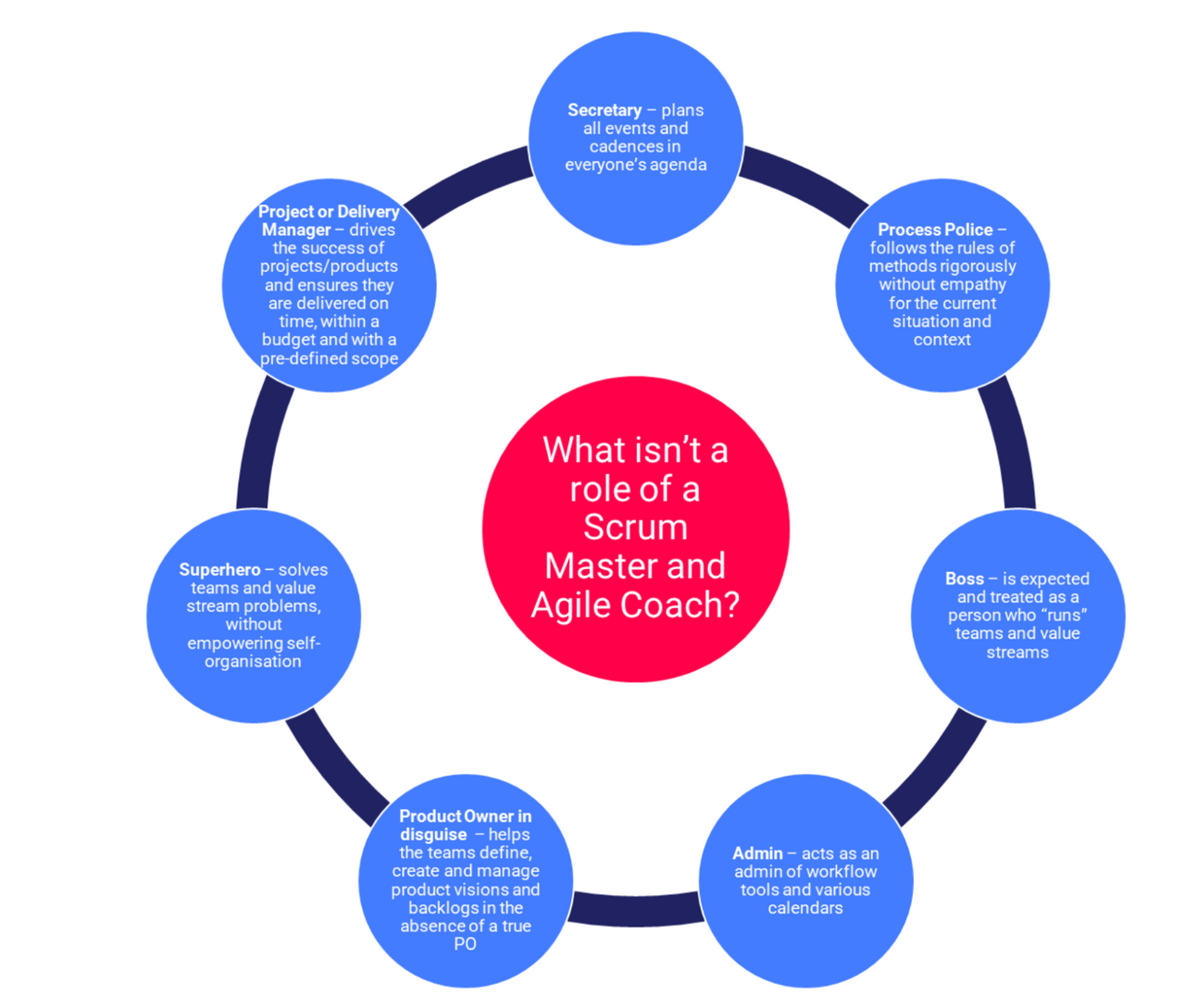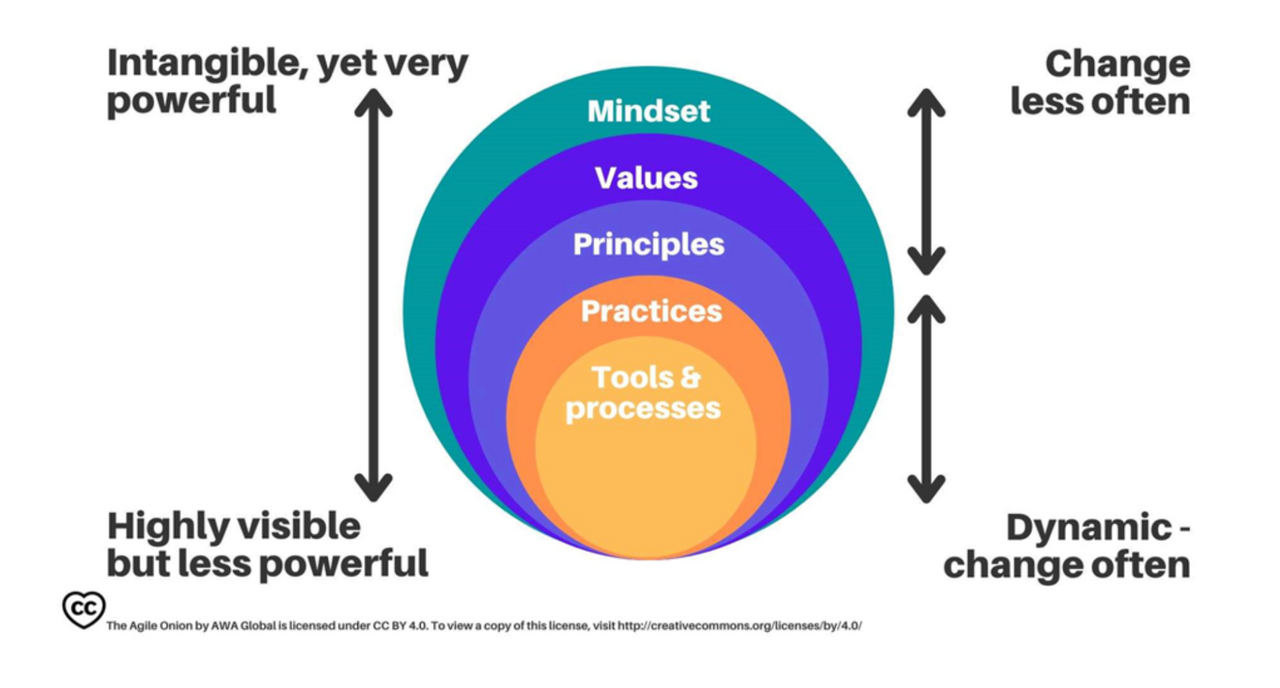Are You Making the Most of Your Agile Coaches and Scrum Masters?
In our second blog addressing the skills gap, Artur Cybruch writes how organisations can be doing much more to maximise value from their Agile coaches and Scrum Masters.
It takes more than good intentions to cultivate a collaborative, empowering and value-driven culture, especially if your organisation operates in a heavily regulated industry. Agile coaches and Scrum masters are often tasked with being the change catalysts who can challenge existing norms and advance working practices—but as the Agile movement matures, how can organisations ensure they’re putting theory into practice to maximise the value from their coaching teams?
With Agile no longer a novelty, and now appearing to sit on the brink of the Market Maturity stage of Levitt's Product Life Development Cycle, some organisations might be starting to reassess the roles and benefits of their coaching teams, and even wondering if they still offer tangible value.
In this blog we’ll look at what Scrum Master and Agile coach roles entail today, the three common anti-patterns in organisations that can inhibit their success, and how businesses can harness the full capabilities of their coaching teams to drive cultural change.
Figure 1. Product Life Development Cycle (Harvard Business Review, 2022)
The Evolution of the Scrum Master and Agile Coach
According to Barry Overeem’s 2022 white paper, there are six stances of a Scrum Master. The purpose of his exploration was to aid self-reflection, obtain feedback from other Agile practitioners, and share essential improvements to the understanding of the role within organisations and the broader Agile community. Overeem offers valuable insight into the specific roles and stances that make a great Scrum Master (Figure 2), which also greatly align with the four competencies of the Agile Coach Competency Framework.
Figure 2. 6 Stances of a Scrum Master (Overeem, 2022)
Figure 3. Agile Coach Competency Framework (Adkins & Spayed, 2011)
Scrum Masters and Agile Coaches often navigate between different stances within their roles, and therefore need to focus their attention and energy on various challenges and areas of improvement, using three key different focus lenses of Team, Value Stream and Organisation.
Team lens
More often than not, Scrum Masters and Agile Coaches are responsible for helping and supporting delivery teams to deliver value to users and customers more quickly and safely. Their effort and time are spent on various team aspects such as enhancing team delivery, engineering practices, coaching for self-management, refining team processes, enabling user and customer collaboration, and fostering an environment for team members to thrive in. At Contino, we have observed that some organisations limit their growth and progress by focusing solely on this bottom lens.
Figure 4. Lenses of Scrum Master and Agile Coach focus
Value stream lens
Once a team’s coached into self-management and high performance, new challenges arise that are beyond its control:
- Systemic impediments affecting all or a range of teams in a value stream, i.e. lack of time to focus on building test automation and removing technical debt due to feature delivery
- Lack of product thinking with pre-defined delivery dates, scope, and 12- and 18-month roadmaps instead of value- and hypothesis-driven, iterative product management
- A high number of inter-team dependencies that are “managed” rather than reduced and removed at source
- Lack of a strategic direction at a value stream level which introduces misalignment, competing priorities, blame culture and company politics
- Command and Control leadership style that discourages autonomy, empowerment, psychological safety and decentralisation of local decision-making
These issues and opportunities for evolution require intervention beyond the scope of the delivery teams and involve improvements to the value stream as a whole. Without the Scrum Masters and Agile Coaches directing their focus and roles towards impediments and opportunities outside of the delivery teams, the teams will naturally hit a plateau with regard to value creation and delivery, and speed-to-market.
Issues and challenges won’t be visible to the influential leaders who can support and empower change champions to drive the value stream and organisation forward. This will naturally lead to a flatlining of improvements, speed and quality of value delivery, and engagement across delivery team members. In order to ensure safe, efficient, and high-quality value delivery, the organisation will need to shift the responsibilities of its change agents. They will need to focus on supporting, improving, and optimising the value stream during this stage.
Organisational lens
After optimising the delivery teams and a value stream, the company should take a moment to reflect and decide their next step. They can choose to further optimise the value stream and teams, move on to another value stream, or focus on identifying opportunities for improvement and removing obstacles at the enterprise level. Enterprise-level enhancements may include the following aspects:
- Building an empowering, collaborative and psychologically safe culture
- Enabling an organisation to learn and experiment at all levels
- Optimising a Value Network to drive collaboration and value delivery throughout the whole enterprise
- Facilitating the optimisation of Product Portfolio Management as well as the Funding process and model
- Implanting the discipline of Systems Thinking into the company’s DNA to enable optimising for the whole
- Promoting a servant leadership style across the CxO suite.
Non-sequential evolution
The lenses above do not represent a step-by-step evolution of the Scrum Master and Agile Coach roles. Change agents should switch between different lenses as needed. For example, if a new team introduces a new product to the market, the change agents may need to focus on the Team lens while also balancing their attention on the Values Stream lens.
Figure 5. Non-sequential evolution of Scrum Master and Agile Coach roles
Three Common Anti-Patterns
There are three common anti-patterns within organisations that can hinder the efforts of Scrum Masters and Agile Coaches, limiting their ability to improve culture and value creation.
1. Lack of a change vision
For any organisation to succeed, it is critical to have a shared understanding of a change vision, whether it relates to the company, value stream, product, Agile or digital transformation. The vision serves as a strategic plan for success and motivates employees to work towards a common goal. Furthermore, it is important for employees to understand the reasons behind any changes to avoid fear and high resistance.
If these components are lacking, Scrum Masters and Agile Coaches may not be aligned with the company's direction and the reason for change, causing them to prioritise improvements that may not impact any of the organisation’s business value drivers.
2. Unclear or misunderstood roles and responsibilities
Despite the many sources that clearly describe the ideal behaviours and skills of Scrum Masters and Agile coaches, these are still often misunderstood, or not even known, in many enterprises and organisations. Sometimes, these roles and responsibilities are also altered or blended with other roles to fill specific needs within a team or company, which can reduce their true responsibilities and potential positive impact.
As a result, the importance of these roles may be diminished and reduced to some of the following seven misunderstood stances within organisations (as shown in Figure 4), where it might be assumed that the roles cover anything from administrative or process police to project manager or boss.
Figure 6. Misconceptions about Scrum Master and Agile Coach roles, based on the work of Barry Overeem (2017)
3. Lack of freedom to challenge the status quo
According to the 2022 State of Agile Report, the main objective of business agility is to be an organisation that “responds quickly and appropriately to its dynamic environment….an agile business is one better suited to thrive in volatile times.”
However, business agility can’t be achieved in isolation. It requires facilitated organisational change, continuous evolution and an Agile mindset to adapt to constantly changing factors such as workforce demographics, technology advancements, market conditions and organisational growth (University of Maryland, 2017). In fact, according to the State of Agile Report, having a number of change agents is one of the leading indicators of enabling successful business agility.
Unfortunately, many organisations embark on an organisational change journey without providing their internal entrepreneurs with the necessary tools or sense of empowerment to seek and introduce evolutionary changes required in volatile and uncertain times.
Scrum Masters and Agile Coaches might not feel psychologically safe to challenge the status quo and current ways of working if they believe they’ll be punished for sharing ideas, suggestions, improvements and taking risks. Similarly, change champions won’t be effective if their focus is only on delivery teams without the organisational drive to help improve a wider system of value creation.
The biggest and most impactful impediments and systemic issues to value delivery occur outside of delivery teams. Therefore, any efforts from Scrum Masters and Agile Coaches to improve the flow of value delivery and organisational culture won’t be fully successful—or long-lasting—if psychological safety and empowerment don’t exist.
The Route to Success
Below are four key steps that businesses and leaders can take to empower Scrum Masters and Agile Coaches to be efficient and beneficial to the organisation.
1. Collaborate and communicate
To fully utilise change agents, the first crucial step is to work collaboratively to establish an inspiring change vision that will serve as the core of any improvements. This vision must be deeply embedded in your company's and value streams’ DNA, and should also present a convincing rationale for change. By doing so, you can ensure that Scrum Masters, Agile Coaches, and the entire workforce will prioritise and optimise changes to help you achieve your vision. However, creating this vision without the input of employees can lead to fear and resistance towards change. People naturally seek certainty and safety, even if the changes bring positive outcomes. It is, therefore, important to invite change agents to facilitate the process of designing and finding ways to adapt and achieve business results in a sustainable and collaborative manner.
Once a shared vision has been established and is revisited on a frequent basis with employee representatives, it is crucial to build a habit of communicating this vision early and often to all employees and change champions. Research from Wanberg and Banas suggests that people who have more comprehensive information about upcoming changes are more committed to a change effort.
This approach can foster an empowering culture of autonomy, purpose and high engagement, contributing positively to business value drivers.
2. Embrace change and experimentation
Hire Scrum Masters and Agile Coaches for their approach to change, experimentation and improvements. Any form of transformation, evolution or improvement inevitably leads to changes in behaviour, thought processes and work methods. It can even shift the values and mindset of individuals, groups, or teams within a company. Scrum Masters and Agile Coaches who possess theoretical knowledge of delivery and release management, DevOps, Agile testing, product management, and building high-performance teams, along with practical experience, can be incredibly valuable to your organisation. However, these change champions should also be able to view the delivery teams, value streams, and the entire enterprise through the three lenses described in Figure 5. They will be able to then introduce change, improvements, and evolutionary experiments in the most effective, optimal, and sustainable manner.
To ensure you're hiring the best continuous improvement talent available and achieving a shared change vision, it's fundamental to understand the thinking process, mindset, coaching, facilitation, and mentoring approach of Scrum Masters and Agile Coaches when it comes to change. Simply hiring and evaluating performance based on knowledge and experience of Agile tools and frameworks will not provide as much long-term benefit and value as expected.
3. Empower change champions to work with leadership teams
The next step to unlocking the value of Scrum Masters and Agile Coaches is to enable these two change roles to have a channel and a platform to collaborate with the Leadership of teams, value streams and the whole organisation on changing and influencing employees’ mindset and behaviours. Powers compares the concept of Agile to an onion with outer layers such as mindset, values and principles being less visible but more powerful in adapting to changing circumstances, building a learning culture within an organisation, and creating value to customers, users, or stakeholders.
Figure 7. Agile Onion (Powers)
As a result of this coalition, Scrum Masters and Agile Coaches can effectively and sustainably assist and support you in your change efforts. They can confidently and safely challenge the current ways of working and thinking, without fear of repercussions. This empowerment allows them to enhance not only your delivery teams but also value streams and the entire organisation via the Value Stream and Organisation lenses, thus increasing the influence and value of Scrum Master and Agile Coaches roles in creating and delivering value quicker and safer, and promoting a collaborative and learning culture.
4. Lead from the front
Hayward and Schneider highlight the significant impact that leaders have on fostering a positive and successful organisational culture, stating that, “Leaders often underestimate the influence they have in developing a strong culture….culture comes from the top, and when leaders embrace this role and nurture an inclusive culture focused on the needs of all stakeholders, everyone wins.”
The mindset, values, and behaviours of company employees are, therefore, greatly influenced by their leaders. Leaders play a crucial role in facilitating change and transformation in the workplace. In order to create a better culture, improve value creation and delivery, and positively impact the business value drivers, leaders must model the change they want to see in their employees.
This approach serves as a foundation for sustainable improvement and reduces the risk of employee resistance to change. By doing so, other change champions like Scrum Masters and Agile Coaches can work with delivery teams, value streams and the organisation as a whole with greater impact and success.
At Contino, we specialise in assisting organisations in improving their mindset, Agile behaviours, and ways of working to achieve their desired outcomes. To find out more about how to effectively utilise Agile coaches and Scrum Masters, get in touch at hello@contino.io.


